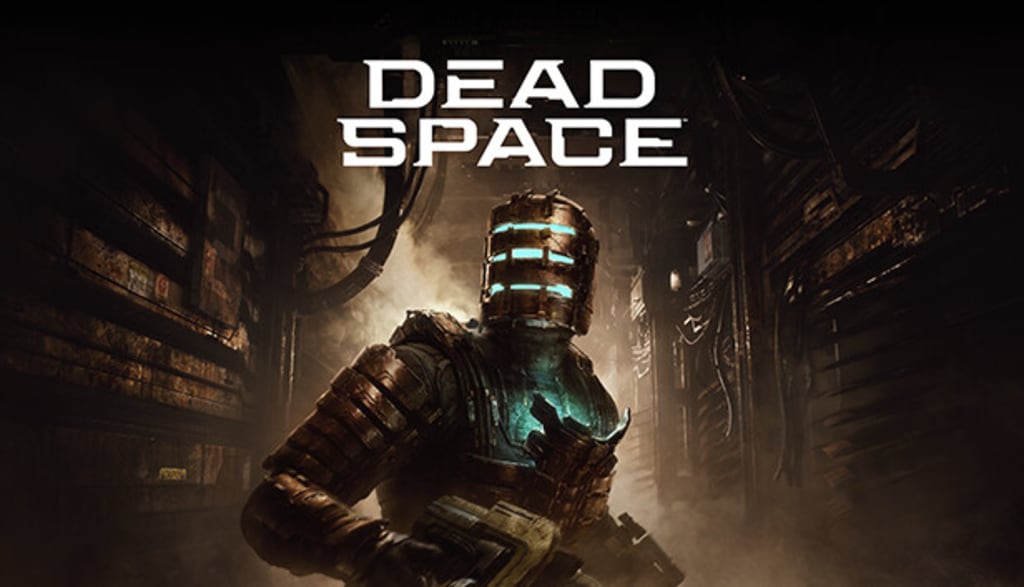Dead Space Remake Review
Make us whole again, Isaac.

The original Dead Space, to this day, remains one of the best survival horror games of all time. In a similar vein, the original Resident Evil, to this day, remains one of the best survival horror games of all time. Both are quite influential to the genre, of course, but the two games now have another thing in common: in both cases, I doubt I’ll ever replay the original again. With Resident Evil, the 2002 remake improves on the original in every single way. Better voice acting, much better graphics (which still hold up shockingly well today!), a better story, and expanded with new content. In neither case do the remakes simply copy and paste the original and toss a new coat of paint on, but they don’t take anything away, either. It’s a clever formula of repeating everything but improving it, and then still adding more.
The unsettlingly industrial atmosphere of the USG Ishimura returns here, just as horrific and terrifying as ever. No turn of its many cramped corners feels safe, and in the twelve hours it took for me to complete my first run of this remake, at no point did the tension ever alleviate. It doesn’t overstay its welcome nor does it end too soon. It ends, just as it did before, with an incredible bang. All of what made the original environment and monsters so unsettling returns in glorious, gory grandeur, ready to tear you to pieces for daring to underestimate them.
For anybody who has played the original Dead Space, the most significant change to the game will be noticeable from the moment the game begins: Isaac Clarke is now a human being. When Dead Space 2 launched in 2011, it changed Isaac Clarke from a stoic, silent errand boy into a fleshed-out character in his own right. In a way, this felt almost jarring, but it certainly created a more compelling protagonist for the player and story at hand. This change is the beating, bloody heart of this remake. Rather than simply being told what to do left and right, showing little to no reaction to the numerous displays all over the distant, floating horror that is the Ishimura, Isaac now clearly displays his engineering prowess. He devises solutions to problems for himself, and he contributes greatly to the story overall. When characters you get to know do end up passing, it feels like he actually cared about them. No longer a passive observer, Isaac now proves why he should be the protagonist of a story rather than simply a vehicle for the player to experience a world. That’s not to say silent protagonists can’t work in other games, but the original Dead Space often felt particularly awkward at times as a result of it.
Isaac’s newfound voice is not the only significant change in the story, however. Several other members of the supporting cast are similarly fleshed out to varying degrees, but in all cases, it served to make them feel more three-dimensional and more human. In the original game, Daniels and Hammond’s contentious relationship appeared to stem from nowhere, simply existing from the start of the game. While there is a sense of mild animosity early on, now their relationship with one another unfolds in a way that feels natural and earned, with Clarke no longer being a simple eavesdropper, but even playing mediator at times to keep them focused on the dire tasks at hand.
Several incredible gameplay improvements have been made as well, bringing the feel closer to the more refined sequel to the original, but improving upon that as well. Zero-G play no longer feels as stiff as it once did, and instead feels elegant and natural, never once feeling bothersome or intrusive. My personal favorite change to the overall gameplay is the complete lack of loading screens. The whole game from start to finish plays out in one continuous shot, similar to Santa Monica Studio's recent entries in the God of War franchise, as well as Halo Infinite (though the latter did feature a scant few loading screens throughout.) As with said God of War titles, the only loading screens you will encounter will be upon your (possibly numerous) deaths. Even the main menu plays out seamlessly, as it faintly displays your most recently played save in the background before smoothly panning the camera out and back into gameplay.
On the negative side of things, there is truly not much I can say. The cover art is certainly nowhere near as good looking as the iconic art from the original game's case. I experienced only a single technical hiccup throughout my entire run of the game, which did cause a crash, but even when I continued the game (which loaded incredibly fast) I had lost no progress. Personally, I never quite got used to Isaac’s new face after being so used to the original for fifteen years, but it’s not a bad change. My inability to get used to it is unsurprising, given that throughout the game’s entire run, he only removes his helmet three or four times for perhaps five minutes at most. The change in Impossible difficulty to simply being a permadeath version of Hard mode is not quite to my tastes, though perhaps others will be glad to not face a massively increased jump in difficulty the way the original provided. One other small issue I have is something I did not even notice until it was pointed out to me: in the original game, if you wanted to save money, you had the choice of not purchasing new suit upgrades as they were made available to you, and even skipping some and buying later ones instead; however, in the remake, you must purchase them in their intended order. It is a small gripe, though it does take a bit away from player choice and risk/reward play that many players likely would have enjoyed.
There are many clever risk/reward decisions quite a few times throughout the story. Many times, players must divert the ship’s power to various systems needed to make progress, but sometimes players are given choices in how to do so. Early in the game, the player has the choice of either turning off the lights and keeping the oxygen, or turning off the oxygen, thus relying on oxygen tanks scattered throughout the area, but keeping the lights on for full visibility. There are other examples, some of which involve fans or fire, but it is a fun element to the game, one which, if anything, was underutilized at times and could have been fleshed out a tad and appeared just a few more times.
This remake adds new side missions which were not present in the original. While there are only three side missions in the game, each of them serves a solid purpose. Two of them serve to further flesh out the story for some of the supporting cast members, and while I won’t spoil how they go about doing so, I will say that they add to the immersion and story in such a way that their absence would feel almost criminal now that they are here. The other side quest rewards the player with wider access to optional areas, and in a fun twist, doesn’t revoke that access when beginning a New Game+. None of the side quests ever take you very far out of your way. In fact, for the most part, I found I often progressed naturally in them through normal play while following the main story simply because of my own explorative nature. The game does a good job of letting the player know that they cannot progress certain steps of side missions until later, preventing me from wandering around in hopes of finding something that was yet unavailable to me. Only once in the game did I find myself backtracking only for the sake of the side missions, and this was largely self-inflicted as I had purposely waited until all of the side missions’ steps were available at once before pursuing some of them. These side missions are quite elegantly implemented into the overall experience and never felt too distracting from the gory meat of the wider game.
While the original’s disgustingly beautiful gore is of course a key aspect of what made it work so well, it is re-upped and reinvigorated beautifully here. It was always incredibly satisfying to CUT OFF THEIR LIMBS with my trusty Plasma Cutter, throw severed heads at enemies, and wander the blood-soaked halls of the ship. While I used only the starting weapon in my initial run, the other weapons proved to be just as satisfying in my New Game+ run that I am currently working through as a result of the game’s excellently high levels of replay value. You’ll likely never fully upgrade all weapons without a few runs under your belt as a result of the resources made available to you, and the final suit upgrade isn’t even available until you’re playing in a New Game+. Most importantly though, a key alternate ending is only able to be seen by gathering all of a new collectible, which can only be found on a New Game+ playthrough.
On the whole, the Dead Space remake follows the best possible formula for remaking a game. It cuts nothing from the original, but improves upon just about all of it, without simply copying it exactly as it was while adding to and improving the formula at nearly every opportunity. Thanks to following the same formula that made the 2002 Resident Evil remake my gold standard for how to properly remake a game for over twenty years, this now will stand alongside it, firmly holding the high bar in place. Story, characters, gameplay, and atmosphere are all retained, improved, and expanded in this wonderful new version of Dead Space, making it the definitive choice for anybody looking to finally play this classic. I doubt I’ll ever play the original again.
“Bad, Good or Great?”
Great
About the Creator
Tanner Linares
Welcome to my profile. You should expect to see a bevy of short fiction stories that I've written here. These will vary in genre, so if you're interested in a variety of stories, feel free to subscribe as you have come to the right place!
Enjoyed the story? Support the Creator.
Subscribe for free to receive all their stories in your feed. You could also pledge your support or give them a one-off tip, letting them know you appreciate their work.






Comments
There are no comments for this story
Be the first to respond and start the conversation.